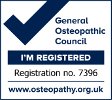Piriformis syndrome
The small piriformis muscle, attaching from the sacrum to the upper part of our femur (thigh bone), is a poorly understood and seldom discussed muscle located in the buttocks which has the main function of rotating the leg outwards. In 15% of us, tension in the piriformis compresses the sciatic nerve as it travels through the buttock from the back to supply the leg andcreates the painful piriformis syndrome. Patients often present with pain, tenderness and occasionally numbness in the buttocks and can also have radiating pain, numbness and pins and needles down the back of the leg into the calf.

Piriformis syndrome is most often caused by one of these factors:
- Low back imbalance or stiffness
- Weak gluteal muscles and tight hip flexor muscles
- Over-pronation of the foot or poor gait
- Overuse of the muscle, where the thigh is repeatedly turned outwards
- Prolonged sitting (particularly on hard surfaces), which causes a tightening of the buttock muscles
- An injury to the buttocks, with trauma causing the piriformis muscle to swell and the sciatic nerve becomes irritated.
- Spasms, however it unclear as to why these spasms occur.
- Heat – use a hot water bottle or a wheat bag (heated in the microwave) to apply heat to the buttock directly to the tender area.
- Medication – over-the-counter or prescribed medication, anti-inflammatory drugs or muscle relaxants can often reduce the pain from the piriformis muscle.
- Exercise & stretching – Often the buttock muscles become overly tight as they are trying to splint and support a weak low back. Pilates and other exercise can help strengthen and stabilise the back and the pelvis and reduce the chances of the problem recurring. Stretching-wise, here is a piriformis stretch from the Essential Osteopathy Youtube channel (make sure you don’t overdo this stretch if your piriformis is spasming) – CLICK HERE
- Hands on therapy – can help to relieve the muscle tension without reverting to medication. Osteopathy can help by releasing such tension using soft tissue massage and stretching techniques directly but also by using techniques such as dry needling (modern acupuncture) and spinal manipulation and articulation (as appropriate) to help reset the neurological reflex arc which, in turn, releases the muscle.







